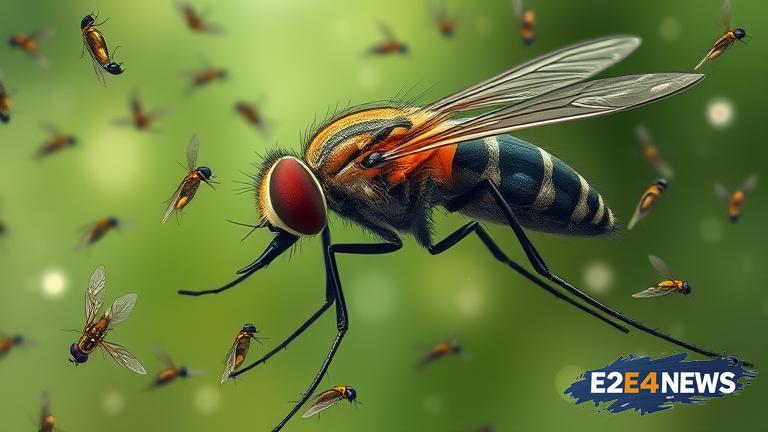In a unique approach to tackling mosquito-borne diseases, a new plan has been unveiled to release millions of flies in affected areas. The initiative, which has been met with both interest and skepticism, aims to utilize the natural predatory instincts of certain fly species to target and eliminate mosquito populations. By introducing these flies into areas where mosquito-borne diseases are prevalent, the goal is to reduce the number of mosquitoes and subsequently decrease the risk of disease transmission. The concept is based on the principle that certain fly species, such as the tachinid fly, are natural predators of mosquitoes and can be used as a form of biological control. These flies are known to lay their eggs inside the bodies of mosquitoes, which eventually kill the mosquitoes as the eggs hatch and the larvae feed on the mosquito’s internal organs. The plan involves breeding large quantities of these predatory flies and then releasing them into the environment. The release of the flies will be targeted at areas with high mosquito populations, with the aim of achieving a significant reduction in mosquito numbers. While the idea may seem unconventional, it has been shown to be effective in certain studies, with some trials demonstrating a significant decrease in mosquito populations following the introduction of predatory flies. However, there are also concerns about the potential unintended consequences of releasing large numbers of non-native species into the environment. Some experts have warned that this could lead to disruptions in the local ecosystem, potentially causing harm to other species or even exacerbating the problem of mosquito-borne diseases. Despite these concerns, the initiative is being pursued as a potential solution to the growing problem of mosquito-borne diseases, which affect millions of people worldwide each year. The release of the flies is expected to take place in several countries, including those in Central and South America, where mosquito-borne diseases such as Zika, dengue, and chikungunya are prevalent. The initiative is being led by a team of scientists and researchers, who are working to develop the most effective methods for breeding and releasing the flies. The team is also conducting studies to assess the safety and efficacy of the approach, as well as its potential impact on the environment. As the plan moves forward, it is likely to be subject to close scrutiny and monitoring, with many experts watching to see whether it will prove to be a successful and sustainable solution to the problem of mosquito-borne diseases. The use of biological control methods, such as the release of predatory flies, is not a new concept, but it has gained renewed attention in recent years as concerns about the environmental impact of traditional pest control methods have grown. The initiative is also being seen as a potential alternative to the use of pesticides and other chemicals, which can have harmful effects on the environment and human health. Overall, the plan to release millions of flies in the fight against mosquito-borne diseases is a complex and multifaceted initiative, which will require careful planning, execution, and monitoring to ensure its success.
